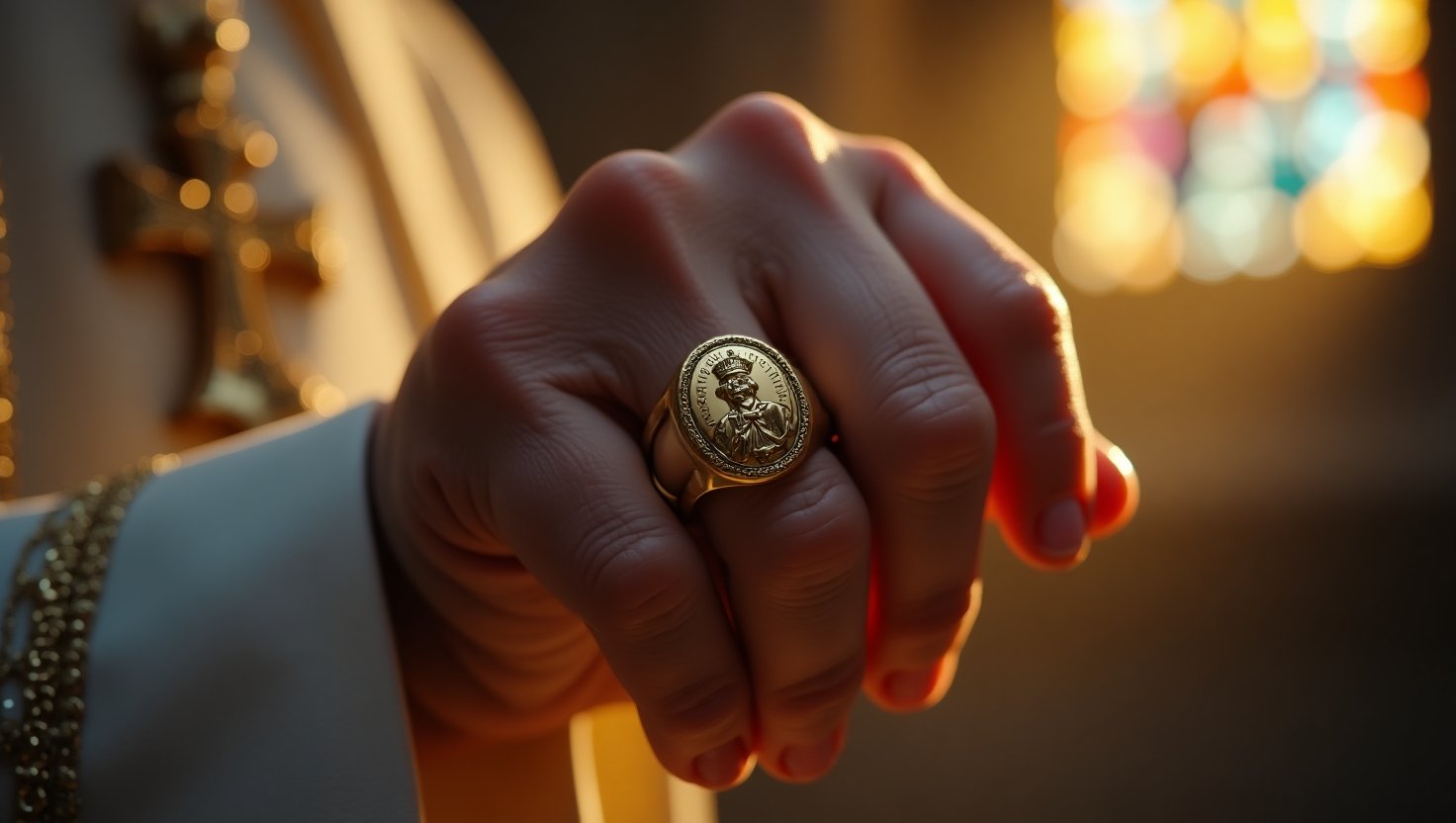
With over half a million views and thousands of interactions, the debate surrounding the Pope’s Fisherman’s Ring is more intense than ever. Once seen as a sacred symbol of papal authority rooted in ancient tradition, today it’s become the subject of viral videos, social media arguments, and even accusations of satanic symbolism. As controversy brews, it’s important to understand the history, the meaning, and the modern interpretations of this powerful ring.
What Is the Fisherman’s Ring?
The Fisherman’s Ring (Anulus Piscatoris) is a gold or silver ring worn by the reigning pope of the Roman Catholic Church. Traditionally, it bears the image of Saint Peter—depicted as a fisherman—and the name of the current pope. Saint Peter was one of Jesus’ apostles and is considered the first pope. The ring represents spiritual authority, divine mission, and succession from Peter himself.
- Origin: First documented in the 13th century under Pope Clement IV
- Symbolism: Peter the fisherman, leader of the early church, “fishing for souls”
- Function: Historically used to seal official papal documents
Tradition Upon Death of a Pope
When a pope dies, a ceremonial act takes place: the ring is defaced or destroyed in the presence of other Vatican officials. This symbolizes the end of that pope’s earthly authority and prevents the misuse of the seal.
Today, the ring may not be destroyed but scratched with a chisel to mark its retirement. It’s a deeply symbolic act—a spiritual closing of one chapter.
Pope Francis and the Fisherman’s Ring
Pope Francis chose a relatively modest silver-plated ring instead of a solid gold one. His decision reflects humility and a break from opulence, which is consistent with his broader message of servant leadership. Images of Francis wearing the ring often show him in prayer, blessing the faithful, or greeting world leaders.
While many Catholics respect this gesture, others feel the ring’s simplicity downplays its historical and spiritual significance.
Why the Controversy Now?
As this topic gains traction on social media, the ring has become a lightning rod. Critics allege:
- Satanic Allegations: Some conspiracy theorists claim the ring has occult connections or carries false power. They link it to secret societies and globalist agendas.
- Power Debates: Others argue the ring holds no real authority, especially if the Church itself is criticized for political involvement or scandal.
But as Christians, we must ask: Is the power of the ring in the gold, or in the God who calls a man to lead? The ring itself is a symbol—an outward reminder of inward service.
The Christian Response
The Bible reminds us that all believers have access to God’s authority through Christ. While symbols can inspire reverence, they are not the source of power—God is.
“For the kingdom of God is not a matter of talk but of power.” – 1 Corinthians 4:20
Rather than debate its validity, let us ask: Does this ring point people to Christ? Does it inspire righteousness and servant leadership? If not, then it has failed its purpose.
Conclusion
The Fisherman’s Ring is steeped in tradition, mystery, and controversy. Whether you see it as a sacred artifact or an outdated relic, its power lies in what it represents—a shepherd called to lead.
In a world quick to dismiss spiritual authority and cast suspicion, let us stay rooted in truth, led by discernment, and guided by grace. For the true power of leadership is not in the ring on one’s hand, but in the love in one’s heart.



